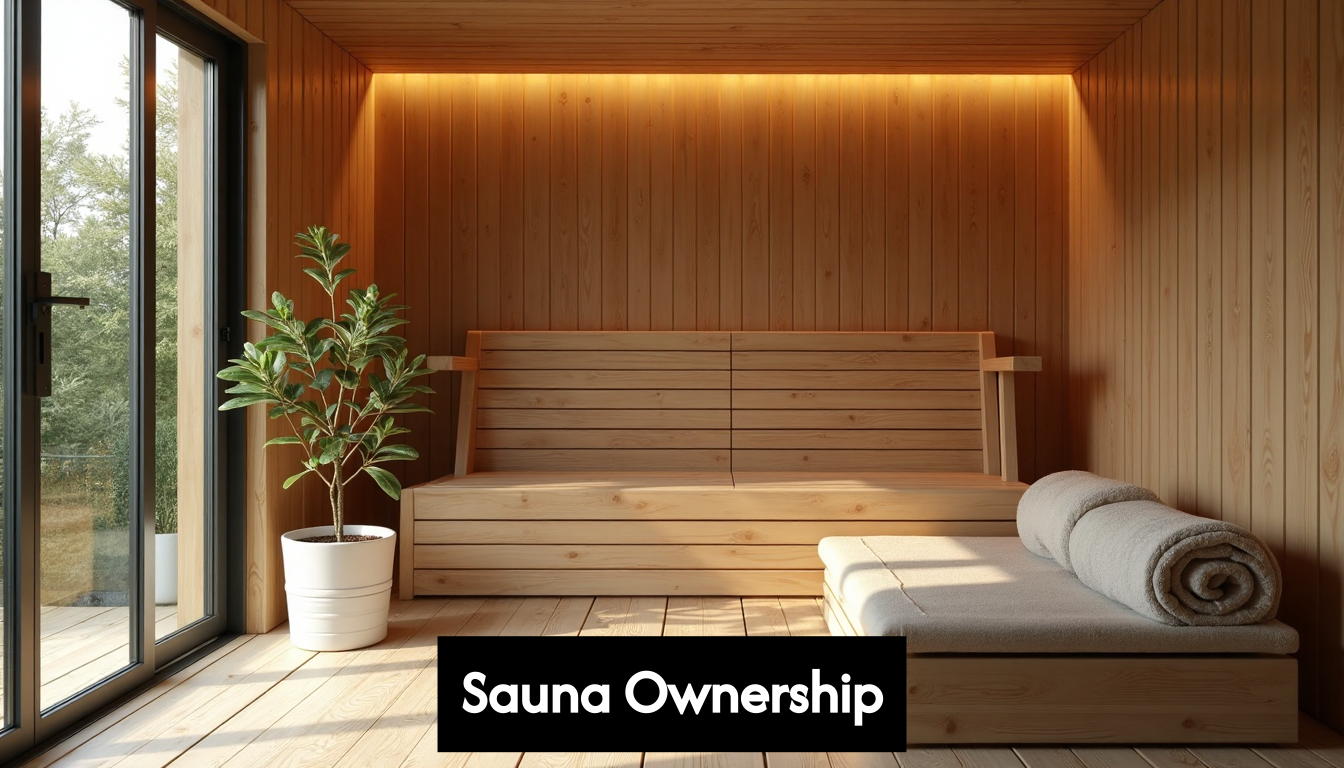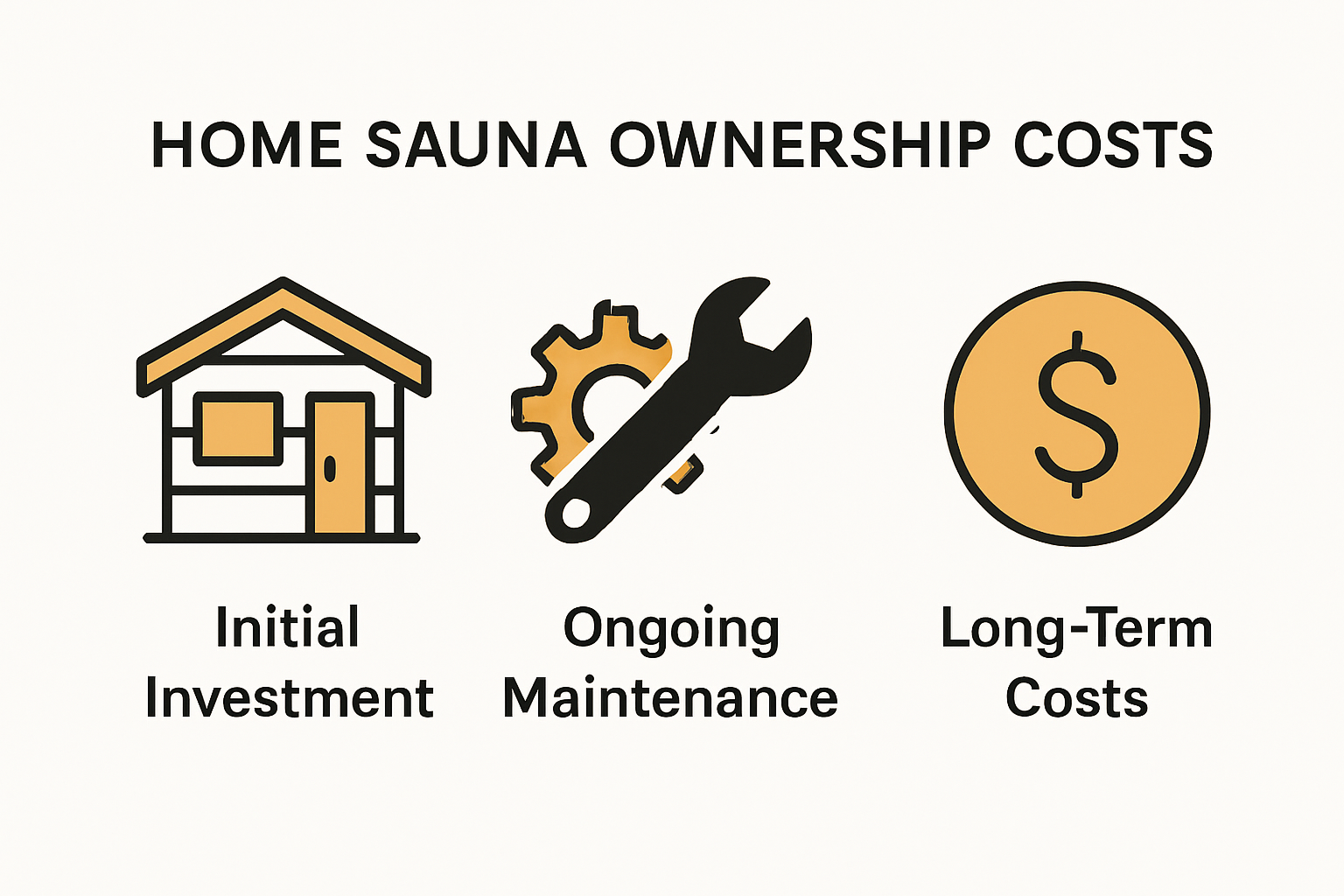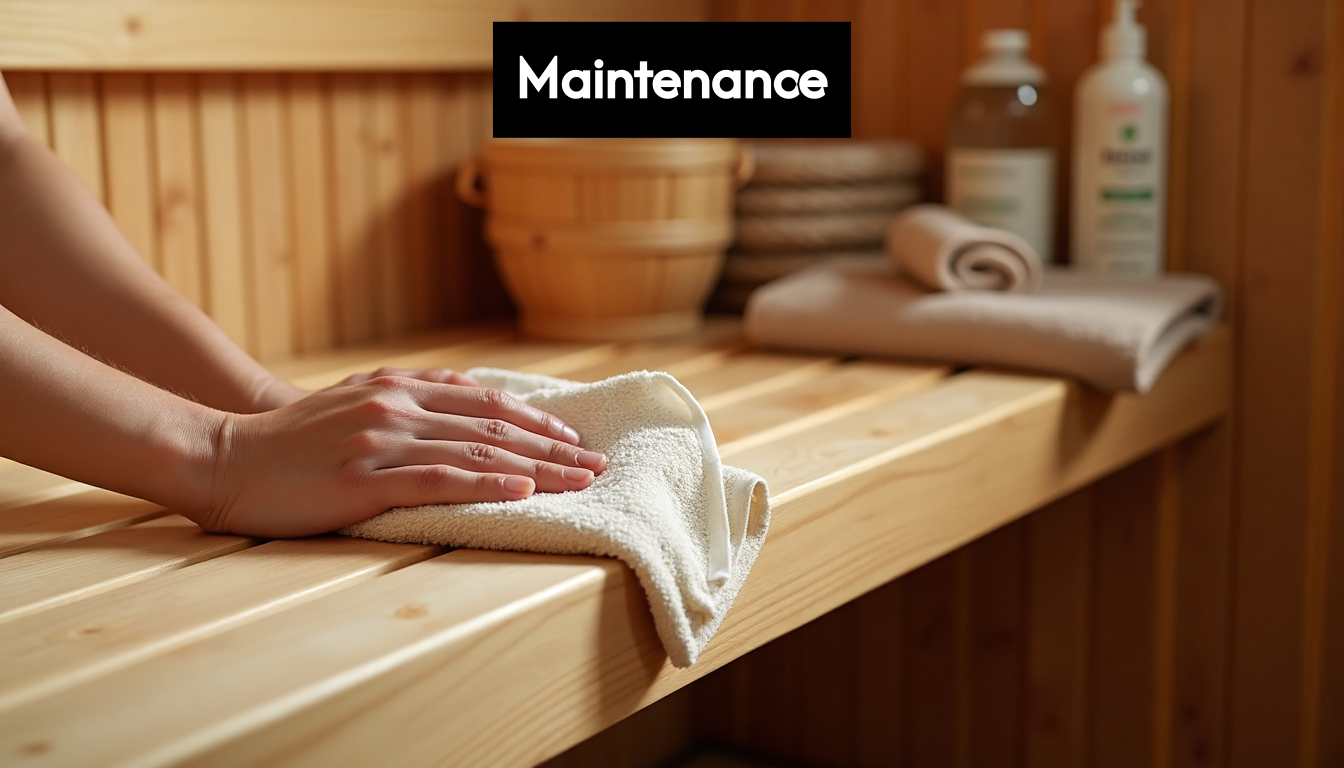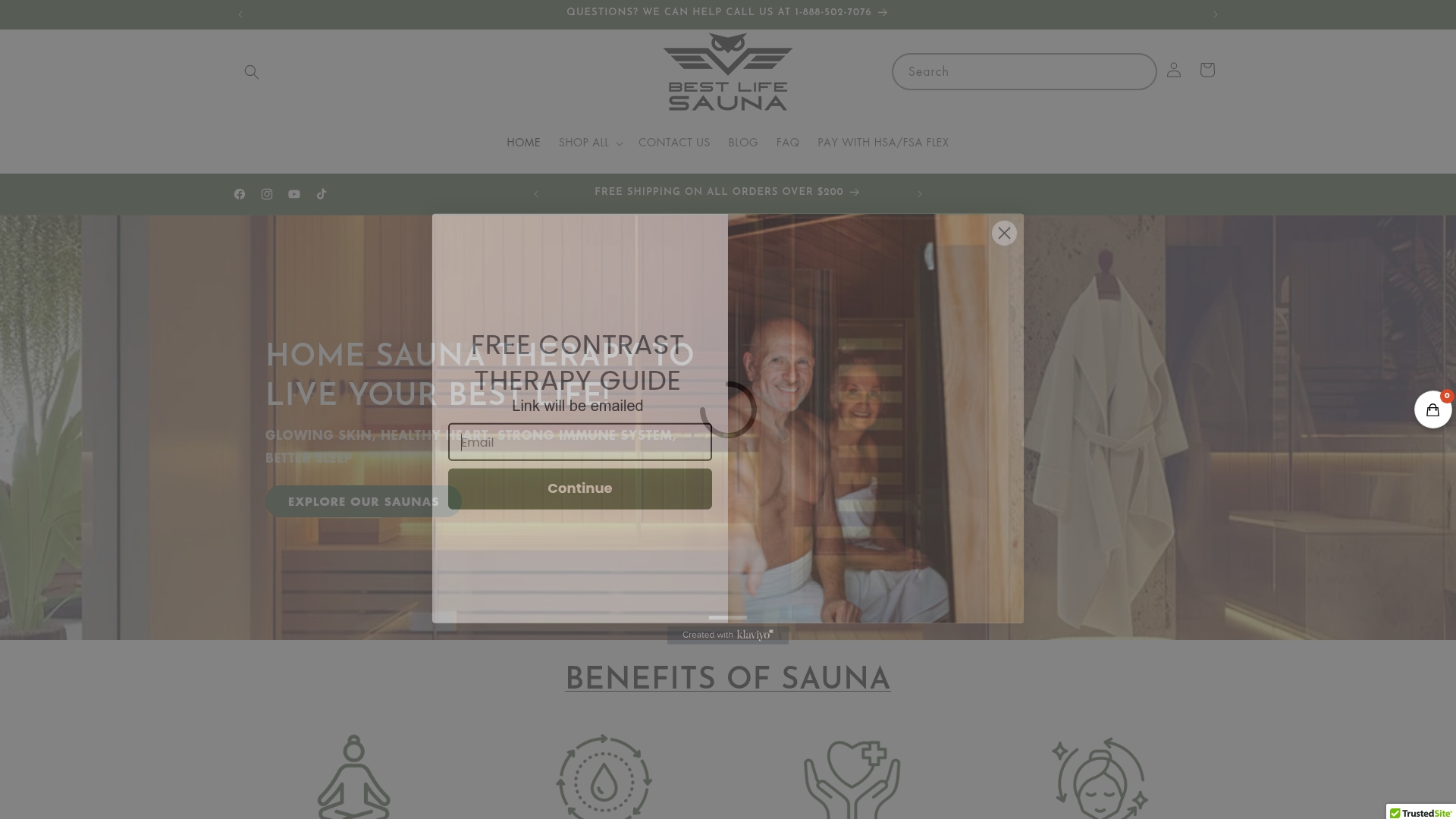
Top Challenges of Sauna Ownership in 2025: What Every Wellness Enthusiast Should Know

Sauna ownership keeps rising as more people look for new ways to support wellness at home. Yet while the benefits are easy to imagine, the surprises often hide in the details. Most homeowners spend between $2,500 and $7,000 just to get started, and that barely scratches the surface of what you need to know. The real test comes with what happens after the installation is done.
Table of Contents
- Budgeting And Managing Sauna Ownership Costs
- Addressing Maintenance And Longevity Concerns
- Navigating Space, Installation, And Home Integration
- Health, Safety, And Maximizing Wellness Benefits
Quick Summary
| Takeaway | Explanation |
|---|---|
| Initial Investment Matters | Sauna installation can range from $2,500 to $7,000, influenced by type, installation complexity, and location-specific electrical requirements. |
| Maintenance is Key | Owners should plan for routine cleaning, professional maintenance, and material considerations to ensure longevity and operational integrity. |
| Space and Compliance Are Crucial | Proper planning for location, adherence to regulatory guidelines, and thoughtful structural integration are essential for effective sauna installation and safety. |
| Awareness of Health Impacts | Regular sauna use offers cardiovascular benefits but requires attention to specific health risks, especially for vulnerable populations like those with heart conditions or pregnant women. |
| Personalized Usage Strategies | Maximizing sauna benefits involves consulting healthcare providers, staying hydrated, and gradually increasing session lengths while monitoring individual responses. |
Budgeting and Managing Sauna Ownership Costs
Owning a sauna represents a significant investment in personal wellness, but understanding the financial landscape is crucial for potential owners. The challenges of sauna ownership extend far beyond the initial purchase price, requiring careful financial planning and ongoing budget management.

Initial Investment Considerations
The financial journey of sauna ownership begins with understanding the upfront costs. Homeadvisor research reveals that home sauna installation typically ranges from $2,500 to $7,000, with most homeowners investing around $3,100. This initial investment varies widely depending on several key factors:
- Type of Sauna: Prefabricated models tend to be more budget-friendly compared to custom-built options.
- Installation Complexity: Labor costs can account for 30% to 50% of the total expense, with professional installers charging between $45 to $200 per hour.
- Location and Electrical Requirements: Home modifications and electrical upgrades can significantly impact overall costs.
Ongoing Maintenance and Operational Expenses
Beyond the initial purchase, sauna ownership involves consistent financial commitments. Market research highlights that maintaining a sauna requires ongoing investment in cleaning, chemicals, and equipment maintenance.
Annual operational costs can include:
- Electricity consumption for heating and maintaining temperature
- Replacement of heating elements
- Cleaning supplies and wood treatments
- Potential repairs and component replacements
- Professional servicing and inspections
Long-Term Financial Planning
Smart sauna ownership requires a comprehensive financial strategy. Home Guide cost analysis indicates that total sauna investments can range from $2,300 to $34,000 depending on the type and complexity. Potential owners should consider:
- Creating a dedicated maintenance fund
- Exploring energy-efficient models to reduce operational costs
- Understanding warranty coverage
- Factoring in potential home value improvements
While the challenges of sauna ownership include financial considerations, the investment in personal wellness and home relaxation can provide substantial long-term benefits. Careful planning, research, and budgeting transform these challenges into an achievable and rewarding wellness journey.
Addressing Maintenance and Longevity Concerns

Maintaining a home sauna requires strategic care and proactive management to ensure optimal performance and extend its operational lifespan. Understanding the nuanced maintenance requirements can help wellness enthusiasts protect their investment and enjoy consistent, high-quality sauna experiences.
Routine Cleaning and Wood Care
Experts recommend implementing a comprehensive cleaning strategy that goes beyond surface-level maintenance. Proper care involves multiple layers of cleaning protocols:
- Daily Maintenance: Wipe down benches and walls with a damp cloth after each use to remove moisture and prevent bacterial growth.
- Monthly Cleaning: Use mild soap and sauna-specific cleaning solutions to thoroughly clean surfaces.
- Quarterly Deep Cleaning: Perform comprehensive cleaning using specialized sauna cleaners to eliminate potential dirt and sweat buildup.
Wood selection plays a critical role in maintenance complexity. Sauna manufacturers note that different wood types have varying maintenance requirements. Cedar and hemlock demonstrate superior moisture resistance compared to pine, potentially reducing long-term maintenance efforts.
Professional Maintenance and Structural Integrity
Professional sauna maintenance experts emphasize the importance of annual professional inspections. These comprehensive evaluations are crucial for identifying potential issues before they escalate:
- Replacing cracked or deteriorating stones
- Checking door seals and hinges for proper alignment
- Verifying ventilation system functionality
- Conducting electrical component inspections
- Assessing structural integrity and potential wood degradation
Regular professional assessments can prevent costly repairs and extend the sauna’s operational lifespan, ultimately protecting your wellness investment.
Technological and Material Considerations
As sauna technologies evolve, maintenance strategies must adapt. Modern saunas often incorporate advanced materials and electronic components that require specialized care. Owners should:
- Understand manufacturer-specific maintenance guidelines
- Keep digital documentation of maintenance history
- Monitor electrical systems for potential wear
- Replace components proactively based on manufacturer recommendations
The challenges of sauna ownership extend beyond initial installation. Successful long-term enjoyment depends on a holistic approach to maintenance that combines personal diligence, professional expertise, and a commitment to preserving the sauna’s structural and functional integrity.
Navigating Space, Installation, and Home Integration
Integrating a sauna into your home requires careful planning and strategic consideration of spatial requirements, installation challenges, and regulatory compliance. Understanding these factors ensures a seamless wellness addition that enhances both your living space and personal health routine.
Space Planning and Location Selection
Indoor sauna experts emphasize the importance of selecting an optimal location that balances accessibility, structural integrity, and functionality. Potential indoor placement areas include:
- Home gyms
- Master bathrooms
- Basement spaces
- Dedicated wellness areas
Sauna space requirements vary significantly based on size and type. Compact models designed for 1-2 persons typically need a minimum footprint of 4×4 feet, while larger models accommodating 4-6 people may require up to 8×8 feet of dedicated space. Outdoor installations demand additional considerations for environmental protection and accessibility.
Regulatory Compliance and Safety Considerations
Home sauna regulations focus extensively on safety and structural requirements. Critical compliance factors include:
- Proper electrical wiring and circuit capacity
- Adequate ventilation systems
- Use of approved construction materials
- Sufficient clearance from combustible surfaces
- Appropriate humidity and temperature control mechanisms
Homeowners must consult local building codes and potentially obtain permits before installation. Professional assessment can help navigate these complex regulatory landscapes and ensure your sauna meets all safety standards.
Structural and Design Integration
Successful sauna integration goes beyond mere placement. Consider these design and structural elements:
- Moisture-resistant flooring
- Appropriate insulation
- Electrical infrastructure
- Ventilation pathways
- Aesthetic alignment with existing home design
The challenges of sauna ownership extend to thoughtful integration. Your sauna should feel like a natural extension of your living space while maintaining its functional wellness purpose. Careful planning transforms potential installation obstacles into an opportunity for creating a personalized wellness sanctuary within your home.
Health, Safety, and Maximizing Wellness Benefits
Sauna ownership represents more than a luxurious home addition. It demands a nuanced understanding of health benefits, potential risks, and responsible usage to truly transform personal wellness. Navigating these considerations requires informed decision making and proactive health management.
Wellness Benefits and Physiological Impacts
Wellness research highlights significant physiological advantages of regular sauna use. Cardiovascular health emerges as a primary beneficiary, with studies indicating potential decreased stroke risks and improved overall heart function. These benefits are most pronounced when sessions are approached systematically and safely.
Key physiological responses during sauna sessions include:
- Increased heart rate mimicking moderate cardiovascular exercise
- Enhanced blood circulation
- Improved thermal regulation
- Potential metabolic rate acceleration
- Natural stress reduction mechanisms
Health Risks and Precautionary Considerations
Medical experts emphasize critical safety considerations. Certain populations face heightened risks that require careful medical consultation:
- Individuals with pre-existing heart conditions
- People managing high blood pressure
- Chronic illness patients
- Older adults
- Pregnant women
Potential health risks include:
- Dehydration
- Heat exhaustion
- Cardiovascular strain
- Potential reproductive health disruptions
Reproductive health research reveals surprising insights. Extended sauna exposure can temporarily impact reproductive functions, with evidence suggesting that a single prolonged session might disrupt sperm production for over five weeks. High temperatures pose particular risks to fetal development during pregnancy.
Responsible Usage and Personalized Wellness Strategies
Maximizing sauna benefits requires a personalized, measured approach. Recommendations include:
- Consulting healthcare providers before establishing a sauna routine
- Staying hydrated before, during, and after sessions
- Limiting initial sessions to 10-15 minutes
- Monitoring personal physiological responses
- Gradually increasing session duration
- Maintaining consistent, moderate temperature exposure
The challenges of sauna ownership extend beyond installation and maintenance. True wellness emerges from understanding individual health dynamics, respecting physiological limitations, and creating a balanced, informed approach to heat therapy. Saunas offer remarkable potential when used thoughtfully, transforming from a mere home feature to a powerful wellness tool.
Frequently Asked Questions
What are the initial costs associated with sauna ownership?
The initial investment for sauna ownership typically ranges from $2,500 to $7,000, depending on factors such as the type of sauna, installation complexity, and location-specific electrical requirements.
What ongoing maintenance costs should I expect for my sauna?
Ongoing costs can include electricity for heating, replacement of heating elements, cleaning supplies, and potentially professional servicing. Annual operational expenses can vary significantly based on usage and maintenance routines.
How can I maximize the health benefits of using a sauna?
To maximize health benefits, consult with healthcare providers, stay hydrated, limit initial sessions to 10-15 minutes, and gradually increase session durations while monitoring your body’s responses.
What should I consider for proper sauna installation and compliance?
Proper sauna installation requires careful planning for location, adherence to local building codes, adequate electrical wiring, ventilation, and ensuring sufficient clearance from combustible surfaces.
Turn Sauna Challenges into Wellness Triumphs with Best Life Sauna
Are you feeling overwhelmed by the hidden costs, endless maintenance, or confusion about sauna installation highlighted in our latest guide? The path to owning a sauna can seem full of obstacles, from budgeting worries to health and safety fears. But you do not have to navigate these challenges alone. Best Life Sauna is your trusted partner, offering premium sauna products and expert support to make your wellness journey simple and rewarding.

Ready to invest smarter, maintain with ease, and maximize your wellness benefits? Visit Best Life Sauna today. Discover our curated selection of infrared, traditional, and outdoor saunas, all backed by a price match guarantee and free shipping on orders over $200. Relax knowing our team is always here to guide you from your first question to ongoing support. Take your next step toward a healthier home and a better life. Explore our solutions now at Best Life Sauna.

